
ASUS ROG Press Conference: ROG Maximus VI Formula and Impact
ASUS ROG Press Conference: Motherboards
For at least every Computex I have attended, ASUS have put on a show – the ROG press conference. This is ASUS’ opportunity to showcase their gaming range, the updates to the gaming range and is definitely a spectacle for the eyes. This year there are a number of items that certainly pique my interest.
As expected, the ROG motherboard range we have seen already were showcased – the Maximus VI Hero, Gene and Extreme. Typically part of this range is the Formula, which was announced today.
As with the Maximus V Formula, ASUS are carving out a niche for the Formula – it is the gaming motherboard to have, much like the Extreme is the performance motherboard to own. On the Formula this generation, the most obvious improvement is the Formula Armor. This combination backplate and frontage is designed to help rigidity – ASUS understand that high-end users going after the Formula are going to be big GPU gamers, where the GPUs can weigh 2 pounds or more. This armor is designed to help make sure the motherboard does not bend when subject to these heavy weights over long periods of time.
The Formula also improves upon audio, with an upgrade to SupremeFX – we have the Realtek ALC1150 audio codec for the rear with a front-panel CirrusLogic DAC for 120 dBA SNR, all with improved EM shielding, filter caps and headphone amplifiers for 600 ohm headphones. The heatpipe arrangement in the power delivery gets an upgraded design (codename ‘CrossChill’), and the mini-PCIe combo gets an upgrade, with instead of mSATA we have the first M.2 connector on a motherboard. The Formula also comes with 802.11ac as part of the combo card.
With the ROG motherboard range, ASUS had three models – over the past few weeks we learned this had improved to four with the Hero. We can now make that range a total of five motherboards, with the announcement of the Maximus VI Impact, the mini-ITX model.
If our readers remember back to my X79 ROG review of the range and the brand, we had an interview with Kris Huang, the PM for the ROG series. I quizzed him on the possibility of a mini-ITX ROG motherboard, and the response was fairly non-specific. Now it is clear that at the time they had had the idea internally and were developing it into the Impact we see today.
So with a mini-ITX SKU, measuring 17cm x 17cm, there is little space to provide the more typical ‘gaming’ features. Despite this limitation, ASUS have provided the Impact with more innovation than you can imagine.
So it was perhaps predictable that the ROG mITX would have power delivery on a daughter board at right angles to the motherboard, much like what we saw on the P8Z77-I Deluxe. What was not predicted is the SupremeFX Impact – a long extensive card for the IO with SupremeFX style audio. In this card we get the SupremeFX shielding, high-end filter caps and headphone amplifiers, much like the Formula.
The Impact also has the mini-PCIe combo card, and I am in the process if this is a model for users’ own WiFi or if it is the same as the Formula. We also get an additional card for the rear IO with integrated two-digit debug, power/reset buttons and a Clear_CMOS button.
No word on pricing or release date for either model, but I would expect within a month or two for both to hit the shelves.
Read More ...
ASUS ROG Press Conference: Sonic Radar Gaming Software
With a brand focused at gamers (and overclocking), software is all important. Over previous generations ASUS have included better audio software packages, integrated SSD caching, network-stack bypassing NICs and options to improve ping – the next iteration of this is Sonic Radar.
The premise behind Sonic Radar is simple – an additional HUD image on the screen that shows the direction that sound is coming from. When dealing with games that output a 5.1 audio stream, the effect of each speaker in that audio stream is calculated and output as sound. We first had headphones that attempted to place the technology into the ears of the gamer, and now ASUS are transferring the details of that screen onto an image.
Sonic Radar is set to be available soon with all ROG sound cards and 2013 motherboards with SupremeFX, initially as a download but will find its way onto the driver CD.
Read More ...
Qualcomm Announces MSM8926 - Snapdragon 400 with Quad Core A7s and Cat 4 LTE
Quite a long time ago, Qualcomm announced MSM8x26, a midrange Snapdragon 400 class SoC built on a 28nm LP process consisting of four ARM Cortex A7 CPUs running at 1.2 GHz alongside an Adreno 305 GPU. That SoC previously came in two flavors, MSM8226 and MSM8626, which connoted the usual combination of either just 3GPP suite air interfaces (HSDPA up to 21.1 Mbps, GSM/EDGE, TD-SCDMA, Dual SIM, Dual Active - DSDA for short) for 8226, or 3GPP and 3GPP2 (the same HSDPA up to 21.1, plus 1x/EVDO) for 8626.
Today Qualcomm has announced a newer version of that Snapdragon 400 SoC, MSM8926. If you've followed Qualcomm's part numbers, this should be self explanatory - it has LTE. It's essentially the same 8x26 SoC (still quad core ARM Cortex A7s at 1.2 GHz and Adreno 305), but this time includes the modem IP block from the upcoming MSM8974 and MDM9x25 family, which means Category 4 LTE (FDD/TDD) with support for carrier aggregation and DC-HSPA+ in addition to the other legacy 3G interfaces you'd expect. Qualcomm says to expect MSM8926 to become available late 2013.
Update: Clocks for both the Adreno 305 and Cortex A7s are unchanged, MSM8926 also supports LPDDR3 in addition to LPDDR2.
Source: Qualcomm
Read More ...
SanDisk Extreme II Review (480GB, 240GB, 120GB)
A few weeks ago I mentioned on twitter that I had a new favorite SSD. This is that SSD, and surprisingly enough, it’s made by SanDisk.
The SanDisk part is very unexpected, because until now SanDisk hadn’t really put out a very impressive drive. Much like Samsung in the early days of SSDs, SanDisk is best known for its OEM efforts. The U100 and U110 are quite common in Ultrabooks, and more recently even Apple adopted SanDisk as a source for its notebooks. Low power consumption, competitive pricing and solid validation kept SanDisk in the good graces of the OEMs. Unfortunately, SanDisk did little to push the envelope on performance, and definitely did nothing to prioritize IO consistency. Until now.
Read More ...
Broadcom Updates 802.11ac SoC Lineup with NAS-Friendly BCM5862x
The initial batch of 802.11ac routers shipped with the dated and inefficient BCM4706 (based on a 600 MHz MIPS32 CPU). Broadcom made some amends last year with the BCM4708x / BCM5301x targeting the SOHO and SMB space respectively. Today, Broadcom is introducing the StrataGX BCM5862x to satisfy the market demand for SMB storage routers.
Broadcom has made some evolutionary updates to the BCM5301x in order to increase performance and simplify design.
The BCM5862x supports both 16 and 32b DDR3 (compared to the 16b-only BCM5301x). The Cortex-A9 cores gain an extra 200 MHz to run at 1.2 GHz. L2 cache is doubled from 256KB to 512KB. The SoC integrates two SATA ports (to accommodate such a design, the BCM5301x had to use an external PCIe switch and a PCIe SATA bridge). The Cortex-A9 cluster in the BCM5862x integrates NEON and VFP, as these features are important for NAS platforms. A 5-port GbE switch is also integrated. The FlexSPARX engine in the StrataGX BCM5862x provides packet and storage acceleration that offloads CPU for other tasks and a crypto engine provides support for IPsec / SSL and VPNs. These features make it attractive for integrated NAS / branch routers in SMB environments.
The StrataGX BCM5862x is available now and sampling to customers.
Read More ...
Acer Announces 8" Iconia W3 Tablet, S3 and S7 Haswell Ultrabooks
Computex is always a big stage for mobile device launches, and Taiwanese manufacturers always seem to bring a little bit extra to their home technology expo. Acer’s press event at Computex 2013 took place earlier today, where they announced some interesting new Windows 8-based devices.
The most notable has to be the Iconia W3 tablet, the first sub-10” device we’ve seen running the latest variant of Windows. We’ve known of the W3’s imminent arrival for some time now, but its no less significant of a launch because of it. It’s a Clover Trail-based Atom slate with Windows 8, an 8.1” 1280x800 display, and a bundled copy of Office Home and Student 2013. Internally, the W3 runs on Intel’s 1.5GHz Atom Z2760 SoC, which we’re very familiar with at this point after dealing with it inside a number of different Windows 8 tablets in the last six months, along with 2GB of DDR3. It’s also got a 2MP rear-facing camera (at that resolution, why even bother?), a single USB port, and 8 hours of battery life. It’ll hit store shelves later this month priced at $379 for a 32GB model, which also makes it the least expensive Windows 8 tablet we’ve seen thus far and undercuts the street pricing of the 64GB ASUS VivoTab Smart by about $50, plus the added cost of Office. The 64GB W3 comes in at $429. A Bluetooth keyboard accessory will also be available.
The W3 is an interesting return to the days of UMPCs, when pocket-sized Windows devices seemed like a legitimate possibility. Back then, the devices were thick, slow, and had terrible battery life, but with the advent of low-power x86 chips, the hardware concerns have been fixed. The W3 comes in at a light 1.1lbs, though the 0.45" thickness is a bit more than we're used to seeing in modern tablets of this size (it's about 60% thicker than the iPad mini). Obviously, the Bay Trail version is the one to wait for, and we already have concerns about the display - it’s not an IPS panel, and reports have pegged it as “needing work” - but the W3 represents a step forward for Windows tablets.

Acer has also updated their flagship Aspire S7 ultrabook with Haswell processors, a WQHD touchscreen display, and improved battery life. It’s had a mild industrial design freshening, with a new unibody aluminum chassis (still a Gorilla Glass lid), along with revised cooling design and a newly refined keyboard with an updated layout and deeper keystrokes. It’s still a remarkably thin computer, at just over a half-inch thick and 2.86lbs. Haswell and WQHD touchscreens are going to be template for ultrabooks going forward, and we’ve already seen ASUS announce the Zenbook Infinity with similar specs. The 10-point capacitive multitouch 2560x1440 IPS display is undoubtedly going to be a very high quality panel, though the Windows experience will be a question. It wasn’t particularly good on Toshiba’s KIRAbook, and I’m skeptical of how Windows responds to UI scaling at high DPIs in desktop mode. The 11” model has been dropped, and the S7 will ship in July at similar price points to the original S7 (MSRP, not current street pricing).

There’s also a new Aspire S3 Haswell-based ultrabook, basically a lower end version of the S7 with similar design language, a completely aluminum chassis (no glass on the lid), and a slightly thicker and heavier chassis - though at 0.7” thick, it’s still pretty slim. The 3.67lb weight is pretty high for the ultrabook class of notebooks, but that can likely be attributed to the optional GeForce GT 735M dedicated graphics. This will not be the only instance in which we’ll see an OEM go with Haswell plus a low-end dGPU for ultrabooks instead of a Crystalwell Haswell GT3e part. The S3 comes with a 1080p IPS display panel and hybrid storage, offering a large storage drive and a solid state cache in place of the purely SSD storage of the S7. Price points are appreciably lower at around the $1000 mark, with the S3 also shipping in July alongside the S7.
We’ll have more to say about the new Acer systems in the coming days, along with much more coverage of Computex 2013.
Read More ...
The ASUS Transformer Book Trio: Atom + Haswell, Android + Windows 8
Now on to notebooks, ASUS just announced the Transformer Book Trio - what it is calling the world's first three-in-one notebook, tablet and desktop PC. In a move that's sure to keep Microsoft grumpy, the TF Book Trio runs both Windows 8 and Android. It looks like the 1080p IPS display portion of the detachable notebook is an Android tablet, while the base runs Windows 8.
Since both OSes are running at the same time, just on different pieces of hardware, you can switch between OSes instantaneously. As a tablet, it's an Android device, but as a notebook it's a Windows 8 PC (or a docked Android tablet I guess). You can also use the PC base to drive an external display wirelessly.

The tablet portion is driven by an Intel Atom SoC (Z2580), while the PC base runs a Haswell CPU.
Read More ...
ASUS' $149 MemoPad HD 7: Quad-Core Cortex A7, 1280x800 IPS Display
It just keeps coming. ASUS also announced a $149 16GB MemoPad HD 7 featuring a quad-core Cortex A7 SoC and a 1280 x 800 IPS display. The HD 7 will come to the US, while an 8GB $129 version will ship in emerging markets.

Read More ...
ASUS Announces 6-inch FonePad Note
The FonePad Note is a 6-inch tablet complete with a 1080p Super IPS+ display, Atom Z2560 SoC (Clover Trail+), 2GB of RAM and a 3G modem with support for up to DC-HSPA+. As the Note suffix implies, the new 6-inch FonePad will come with a stylus.

Read More ...
ASUS' New Transformer Pad Infinity: Tegra 4 + 2560 x 1600 IPS Display
ASUS just announced its next-generation Transformer Pad Infinity based on NVIDIA's Tegra 4 SoC and featuring a 2560 x 1600 display.

Read More ...
ASUS MemoPad FHD10: Clover Trail+, 10-inch, 1920x1200, Android 4.2
Alongside the beautiful Zenbook Infinity ASUS also displayed its MemoPad FHD10, a 10-inch Clover Trail+ tablet running Android 4.2. ASUS' silicon of choice is Intel's Atom Z2560, a dual-core 1.6GHz 32nm Saltwell based SoC with PowerVR SGX 544MP2 graphics. The Z2560 is the mid-range Clover Trail+ part with a 400MHz max GPU clock. Graphics performance should be ahead of a 3rd generation iPad, but behind the 4th gen iPad. CPU performance should be quite good.
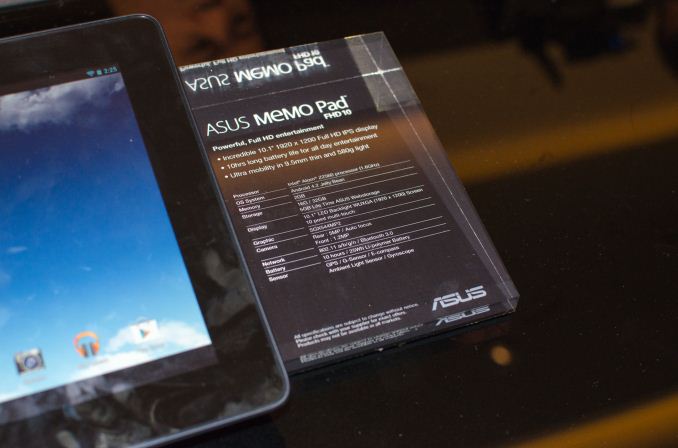
The 10.1-inch display features a 1920 x 1200 panel. The tablet ships with either 16GB or 32GB of NAND and a 25Wh integrated battery.
Read More ...
ASUS Zenbook Infinity: 28W Haswell with Iris 5100 Graphics, 2560 x 1440 Panel?
I just got seated for ASUS' annual Computex press conference, but just outside of the conference area ASUS already had its to-be-announced products on display. The most exciting? The 13.3-inch Zenbook Infinity.
Internally there's a 28W dual-core Haswell part with GT3 graphics, otherwise known as Iris 5100. Keep in mind this isn't the Crystalwell-enabled part (that's Iris Pro), but you get 40 EUs at least. We don't know too much about the system, but I have heard it might feature a 2560 x 1440 panel option similar to Acer's newly announced 2nd gen Aspire S7.

The back of the display features Corning Gorilla Glass 3, as do the palm rest and trackpad. It's a very sleek looking notebook and I'm glad to see ASUS using a GT3 variant in something at least. Along the edges of the chassis I spot two USB 3.0 ports, a mini HDMI port, mini DisplayPort (no Thunderbolt), headphone jack and an SD card reader. I'll update this post as I get more details on the notebook.
Read More ...
Computex 2013: Kabini in a BRIX, Haswell Too
Despite Computex not officially starting yet, I am spending most of today in the Gigabyte suite. Before my booth tour I took a quick look around and a couple of little devices caught my eye: Kabini (and Haswell) in a BRIX. So BRIX is Gigabyte's take on the Intel NUC, and the first designs of BRIX could be found on the web a while ago - the first models with the BRIX design should be on sale shortly, with these Kabini and Haswell models to follow.
The Kabini model was placed with a list of compatible APUs: A4-5000, E3-3000, E1-2500 and E1-2100. Similarly the Haswell model is placed next to a sign stating compatibility up to an i7-4500U.
Connectivity includes a pair of USB 2.0 (not shown above), headphone output, two USB 3.0, ethernet, dual display (HDMI/mDP) and a Kensington lock.
Clearly the ideal chip in this form factor would be a GT3e/Crystallwell part. I am having a full guided tour of the booth later today and will ask questions such as storage, price/release date, and hopefully some internal shots!
Read More ...
Zynga to Lay Off 18 Percent of Staff by August
This equates to about 520 employees
Read More ...
Quick Note: HTC One Coming to Verizon in "Late Summer"
No pricing details have been released yet
Read More ...
Foxconn Signs Deal With Mozilla, Shows of Prototype Firefox OS Tablet
Devices will start launching in limited markets later this summer
Read More ...
Hackers Install Malware on iPhone With Malicious Charger
Black Hat conference demonstration shows a fresh route to subverting the popular iPhone
Read More ...
Study: Lithium-Ion Batteries Can Impact Environment, Health Negatively
But the study offers suggestions for making these batteries better for everyone exposed
Read More ...
ASUS Rolls Out 7 New Products at Computex 2013
Some include the Transformer Book Trio and the Transformer Pad Infinity
Read More ...
ARM Reveals Cortex A12 With Malli T600 GPU, OpenGL ES 3.0 for Mid-Range Mobile
Release fills the gap between A9 and A15
Read More ...
Microsoft's CIO Jumps Ship; Company Considering Focusing on Devices, Services
Major executive shakeups continue for the world's largest OS maker
Read More ...
Report: Microsoft to Cut Price of Windows RT
But will it be enough to push sales?
Read More ...
Samsung Introduces Galaxy Tab 3 10.1-inch, 8-Inch Tablets
Samsung adds a pair of tablets to its Galaxy Tab 3 family
Read More ...
Google Isn't Ready to Use Facial Recognition Software in Google Glass
It may later after privacy safeguards are in place
Read More ...
Available Tags:ASUS , Gaming , Acer , Windows 8 , Android , Windows , HTC , Firefox , Tablet , iPhone , CIO , Microsoft , Galaxy Tab , Samsung , Galaxy , Google , Google ,








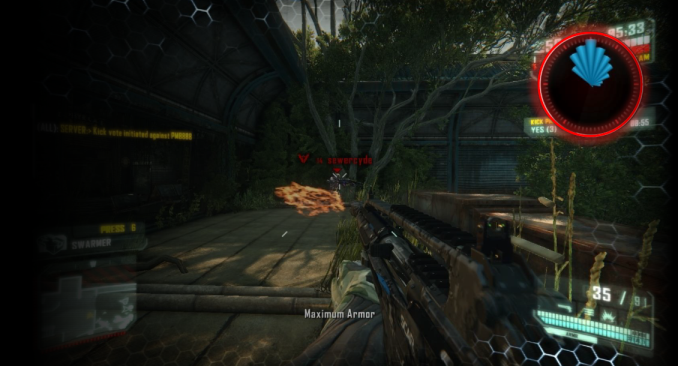



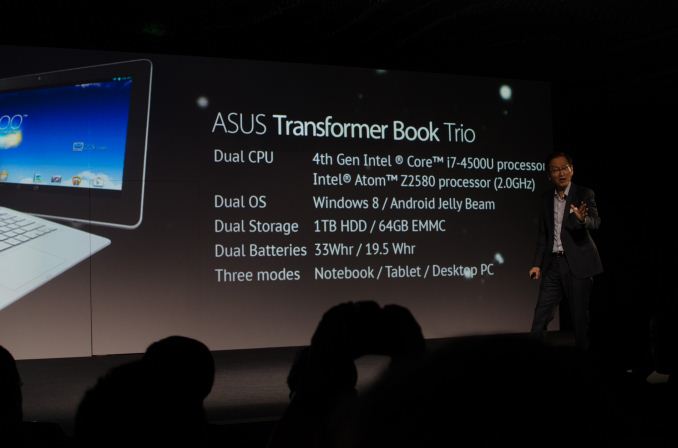

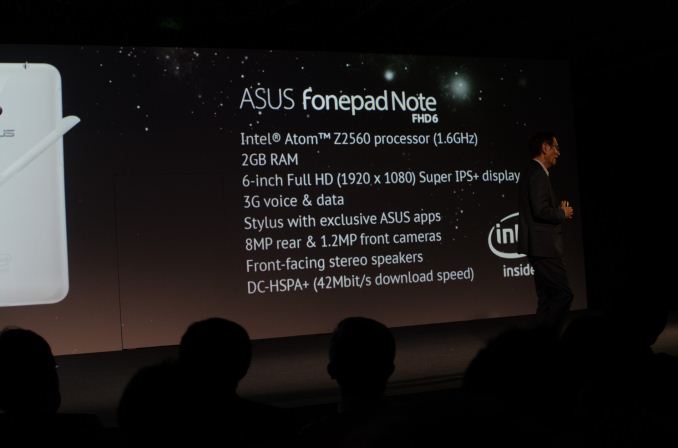



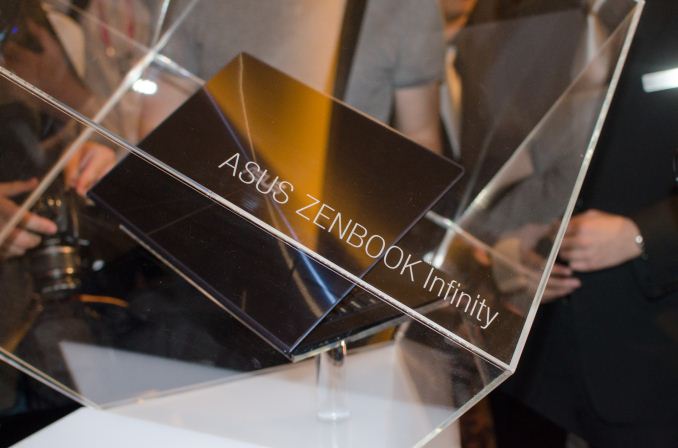




















No comments:
Post a Comment